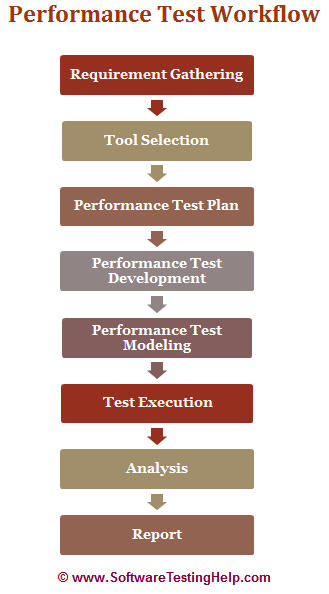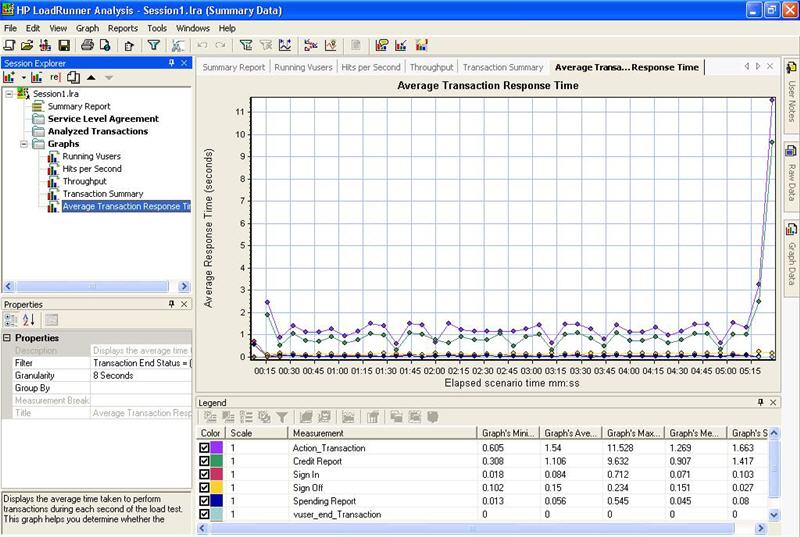This is the 2ndtutorial in our Performance testing with LoadRunner training series. With this, we are learning the exact performance test process so that we can easily get hold of the Load Testing with HP LoadRunner tutorials.
Check out the first tutorials in this series here: Performance Testing Introduction.
Performance Testing Goals:
It is conducted to accomplish the following goals:
- Verify Application’s readiness to go live.
- Verify if the desired performance criteria are met
- Compare performance characteristics/configurations of the application to what is standard
- Identify Performance bottlenecks.
- Facilitate Performance Tuning.
Key Activities in Performance Testing:
#1. Requirement Analysis/Gathering
Performance team interacts with the client for identification and gathering of requirement – technical and business. This includes getting information on application’s architecture, technologies and database used, intended users, functionality, application usage, test requirement, hardware & software requirements etc.
#2. POC/Tool selection
Once the key functionality are identified, POC (proof of concept – which is a sort of demonstration of the real time activity but in a limited sense) is done with the available tools. The list of available performance test tools depends on cost of tool, protocol that application is using, the technologies used to build the application, the number of users we are simulating for the test, etc. During POC, scripts are created for the identified key functionality and executed with 10-15 virtual users.
#3. Performance Test Plan & Design
Depending on the information collected in the preceding stages, test planning and designing is conducted.
Test Planning involves information on how the performance test is going to take place – test environment the application, workload, hardware, etc.
Test designing is mainly about the type of test to be conducted, metrics to be measured, Metadata, scripts, number of users and the execution plan.
During this activity, a Performance Test Plan is created. This serves as an agreement before moving ahead and also as a road map for the entire activity. Once created this document is shared to the client to establish transparency on the type of the application, test objectives, prerequisites, deliverable, entry and exit criteria, acceptance criteria etc.
Briefly, a performance test plan includes:
a) Introduction (Objective and Scope)
b) Application Overview
c) Performance (Objectives & Goals)
d) Test Approach (User Distribution, Test data requirements, Workload criteria, Entry & Exit criteria, Deliverable, etc.)
e) In-Scope and Out-of-Scope
f) Test Environment (Configuration, Tool, Hardware, Server Monitoring, Database, test configuration, etc.)
g) Reporting & Communication
h) Test Metrics
i) Role & Responsibilities
j) Risk & Mitigation
k) Configuration Management
#4. Performance Test Development
- Use cases are created for the functionality identified in the test plan as the scope of PT.
- These use cases are shared with the client for their approval. This is to make sure the script will be recorded with correct steps.
- Once approved, script development starts with a recording of the steps in use cases with the performance test tool selected during the POC (Proof of Concepts) and enhanced by performing Correlation (for handling dynamic value), Parameterization (value substitution) and custom functions as per the situation or need. More on these techniques in our video tutorials.
- The Scripts are then validated against different users.
- Parallel to script creation, performance team also keeps working on setting up of the test environment (Software and hardware).
- Performance team will also take care of Metadata (back-end) through scripts if this activity is not taken up by the client.
#5. Performance Test Modeling
Performance Load Model is created for the test execution. The main aim of this step is to validate whether the given Performance metrics (provided by clients) are achieved during the test or not. There are different approaches to create a Load model. “Little’s Law” is used in most cases.



